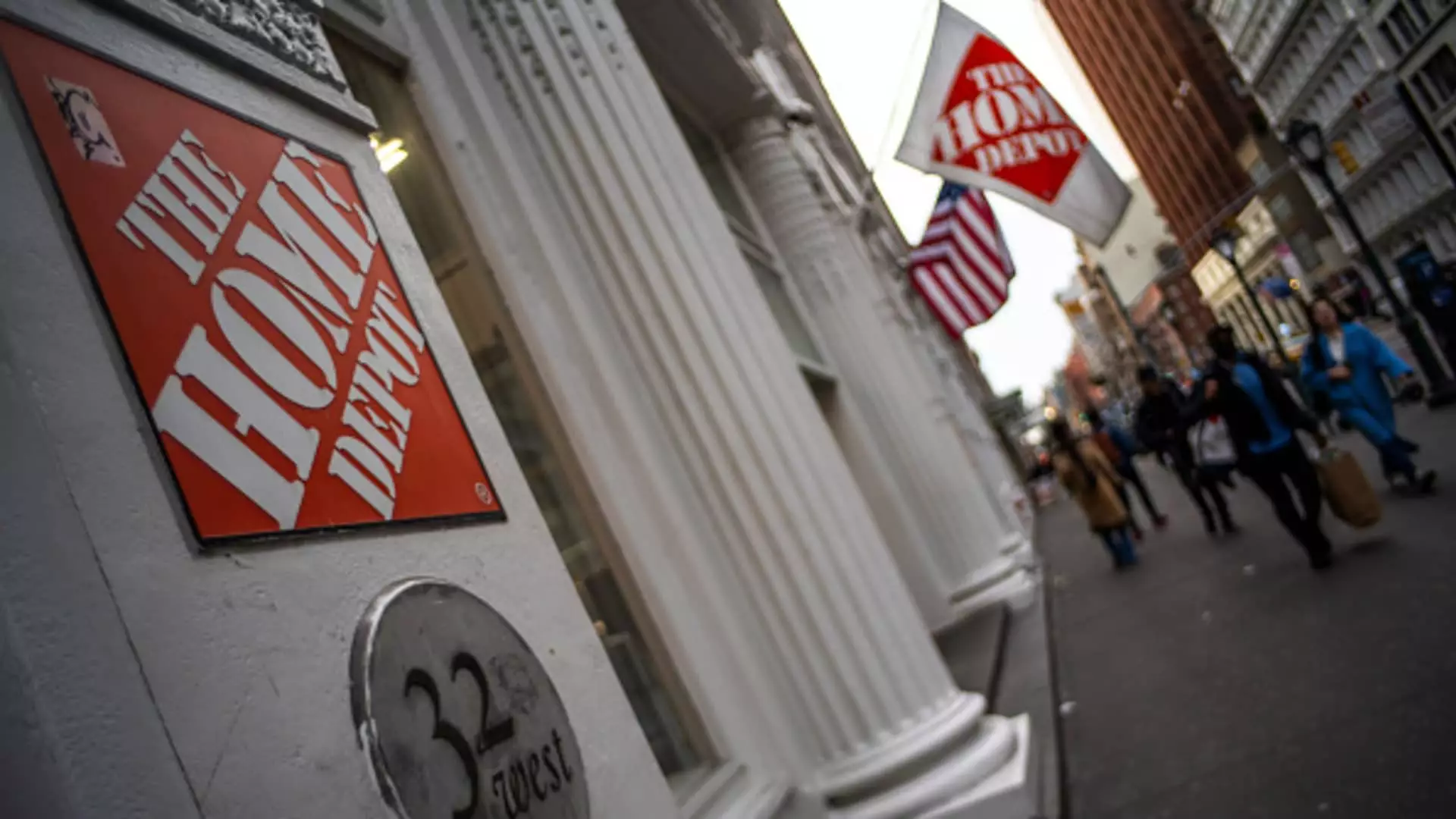In an uncertain economic landscape, it is refreshing to find a silver lining, particularly when it comes to critical sectors like construction and home improvement. A recent survey conducted by Morgan Stanley involving nearly 131 contractors has revealed sentiments that suggest a cautious optimism in the industry. While concerns regarding inflation and tariffs loom overhead, the general consensus among painters and remodelers is one of resilience. Their outlook demonstrates a belief that business will improve, along with the prospect of a robust backlog of projects already in place.
In a time when many industries are haunted by fluctuations, it is noteworthy that the majority of contractors anticipate an uptick in demand for larger projects. This inclination could indicate that consumers are willing to invest in their homes despite economic uncertainties—a sign of overall confidence in the housing market. What this means for Home Depot is simple: the company stands at the forefront of a burgeoning market, ready to capture consumers’ increased willingness to spend on renovations and improvements.
Backlogs and Business Confidence
The healthy backlog of existing projects among contractors reflects not just confidence but also the growing need for home refurbishments. Many homes in the U.S. are aging, with over half being over 40 years old. As the CEO of Home Depot, Ted Decker, highlighted in a March interview, the necessity for repairs and upgrades in older homes creates a cascading effect for companies in the home improvement sector. People are not merely looking to maintain property values; they are increasingly aware that their living spaces require significant attention to become functional and appealing.
This need for improvement is reminiscent of past economic recoveries. It brings to mind the adage that necessity breeds innovation; in this case, the necessity is a stable home environment. For Home Depot, the increased demand for renovation signifies not just a potential windfall but also the opportunity to bolster customer loyalty. As contractors find themselves inundated with work, they will likely turn to reliable partners like Home Depot for their supplies, solidifying long-term relationships that benefit both parties.
The Tariff Tangle
However, the increasing concern over tariffs and material costs cannot be overlooked. Contractors have expressed legitimate worries over inflated prices due to ongoing trade tensions and raw material shortages. Understanding the scope of these challenges is crucial for Home Depot’s leadership; ongoing discussions and governmental changes can significantly impact materials pricing that ultimately affects both contractors and consumers.
Despite these challenges, Home Depot’s portfolio suggests a proactive approach. By working closely with vendors and monitoring tariff impacts—while maintaining an advocate stance for customers—Home Depot is positioning itself strategically. Rather than succumbing to panic or uncertainty, the company’s leadership remains committed to transparency and agility, traits that could reassure both contractors and consumers alike.
Macro Trends Favor Home Improvement
Amid these fluctuating economic circumstances, some macro trends are emerging that suggest Home Depot will continue to fare well. Interest rates are a pivotal element in the housing market, and as Jim Cramer noted, fixed-rate mortgages below 6.5% are historically associated with increased housing activity. This environment can create a ripple effect, driving consumer investments into home improvements as homeowners lean toward building equity rather than simply letting their homes depreciate.
Moreover, Home Depot’s strategic acquisition of SRS Distribution for $18.25 billion signals a robust commitment to professional contractors—an avenue that seems to be paying off. Sales from professional customers have outperformed DIY sales, indicating that Home Depot’s business model is evolving in response to shifting market demands. This strategic pivot, emphasizing professional relationships, further positions the company as a leader in the home improvement sector.
Long-Term Growth and Investor Sentiment
For investors and stakeholders, the sentiment surrounding Home Depot is largely positive despite some analysts adjusting target prices due to the overlays of tariffs and inflation. Jim Cramer’s influence and ongoing optimism reflect a knowledgeable foresight amid stormy seas. Encouraging investment strategies that acknowledge the volatility but lean into the intrinsic value of Home Depot, traders are being urged to maintain long positions—a promising takeaway.
In such tumultuous waters, the ability to forecast growth is paramount. While some skeptics may focus on potential pitfalls and uncertainties, a more astute analysis necessitates looking beyond the immediate struggles. The resilience of the home improvement industry, coupled with the strategic maneuvers of companies like Home Depot, indicates that the sector is far from stagnation—rather, it stands at the brink of a burgeoning expansion fueled by a well-informed consumer base.

